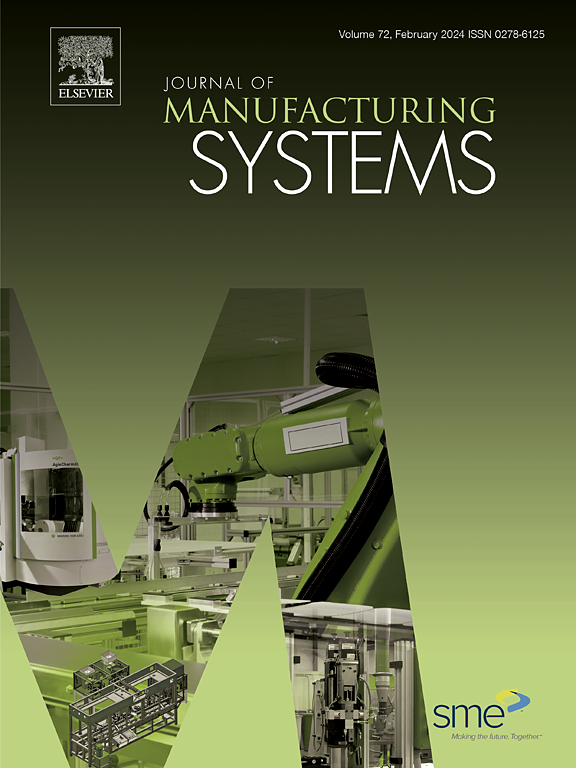Coarse-to-fine vision-based welding spot anomaly detection in production lines of body-in-white
IF 14.2
1区 工程技术
Q1 ENGINEERING, INDUSTRIAL
引用次数: 0
Abstract
Computer vision-assisted methods for weld quality inspection enable rapid and automated surface defect detection through image data. However, the application of Computer Vision-Assisted Inspection (CVAI) in real-world production lines faces substantial, long-term challenges due to complex environments, imbalanced data samples, real-time processing demands, and safety requirements. Our paper proposes a novel two-stage Coarse-to-Fine Anomaly Detection (CTFAD) framework, which integrates the YOLOv8 network architecture for initial detection with an ensemble of neural networks for fine-grained classification. Additionally, we introduce a voting-based algorithm for improved decision-making accuracy. Experimental results on real-world datasets demonstrate that, compared to standard end-to-end methods, CTFAD enhances detection accuracy and operational efficiency. Our contributions include (1) proposing the CTFAD pipeline for weld anomaly detection, (2) establishing voting-based classification module to increase system robustness and generalization, and (3) developing an integrated weld detection system encompassing data acquisition, processing, analysis, and anomaly alerting. Our code is available at https://github.com/wj-liu0730/ctfad-jms.
基于粗精视觉的白车身生产线焊点异常检测
焊接质量检测的计算机视觉辅助方法可以通过图像数据快速、自动地检测表面缺陷。然而,由于复杂的环境、不平衡的数据样本、实时处理需求和安全要求,计算机视觉辅助检测(CVAI)在现实生产线中的应用面临着巨大的、长期的挑战。本文提出了一种新的两阶段粗到细异常检测(CTFAD)框架,该框架将用于初始检测的YOLOv8网络架构与用于细粒度分类的神经网络集成在一起。此外,我们还引入了一种基于投票的算法来提高决策精度。在实际数据集上的实验结果表明,与标准的端到端方法相比,CTFAD提高了检测精度和操作效率。我们的贡献包括:(1)提出了用于焊缝异常检测的CTFAD管道;(2)建立了基于投票的分类模块,以提高系统的鲁棒性和泛化能力;(3)开发了一个集成的焊缝检测系统,包括数据采集、处理、分析和异常警报。我们的代码可在https://github.com/wj-liu0730/ctfad-jms上获得。
本文章由计算机程序翻译,如有差异,请以英文原文为准。
求助全文
约1分钟内获得全文
求助全文
来源期刊

Journal of Manufacturing Systems
工程技术-工程:工业
CiteScore
23.30
自引率
13.20%
发文量
216
审稿时长
25 days
期刊介绍:
The Journal of Manufacturing Systems is dedicated to showcasing cutting-edge fundamental and applied research in manufacturing at the systems level. Encompassing products, equipment, people, information, control, and support functions, manufacturing systems play a pivotal role in the economical and competitive development, production, delivery, and total lifecycle of products, meeting market and societal needs.
With a commitment to publishing archival scholarly literature, the journal strives to advance the state of the art in manufacturing systems and foster innovation in crafting efficient, robust, and sustainable manufacturing systems. The focus extends from equipment-level considerations to the broader scope of the extended enterprise. The Journal welcomes research addressing challenges across various scales, including nano, micro, and macro-scale manufacturing, and spanning diverse sectors such as aerospace, automotive, energy, and medical device manufacturing.
 求助内容:
求助内容: 应助结果提醒方式:
应助结果提醒方式:


